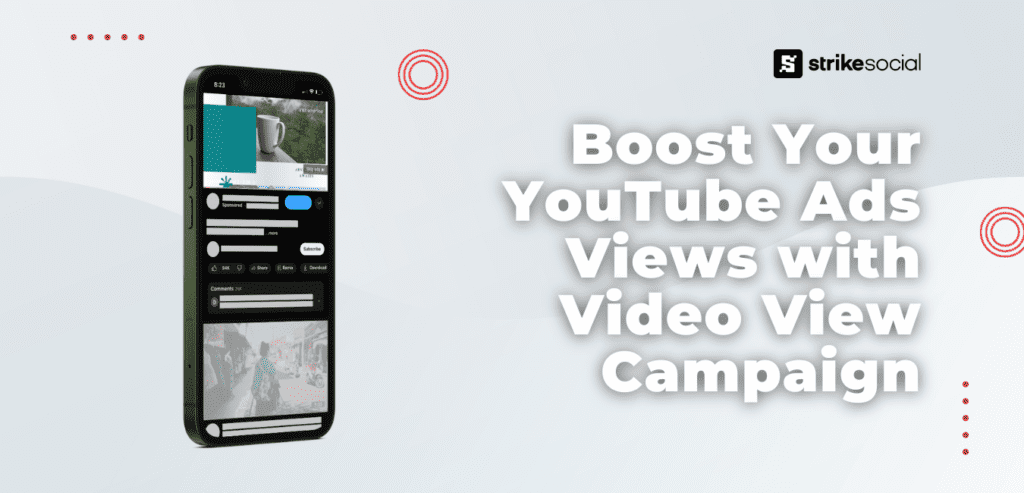Strike Overview
- Effective YouTube ad targeting is one of the most important components of your video advertising campaign.
- With Google Ads (YouTube’s ad platform), getting your sights set on the correct target has become critical due to improved controls that allows a user to “mute” an advertiser.
- With over 239 million US users, YouTube advertisers need to pinpoint their audiences carefully to minimize wasted ad spend and maximize success in 2025.
Jump to Section
This post was updated in November 2024 to provide you with the latest information.
Different Options for YouTube Ad Targeting
Let’s examine the YouTube advertising targeting options available. When preparing your video ad campaigns on YouTube, you can segment your audience by:
Device
This YouTube targeting option includes the choice between desktop, tablet or mobile, plus the Android and iOS operating systems.
Location
Targeting by location on YouTube allows you to filter countries, cities or territories within a country or even a radius around a specific location. Many brands market nationally, while some exist within a singular city, state or region. Location targeting allows you to choose the area where your customers reside and your operations exist.
Demographics
The demographic targeting option refers to more than gender and age. It also includes YouTube audience segments such as language, parental status and household income level.

Interests
This YouTube ad targeting option reaches people interested in topics related to your product, business or service. You can choose from topics such as fashion, sports, makeup, and gaming. Google then finds people known to be interested in the subjects you identified in the targeting and shows them your video ad as they peruse or view content across the Google Display Network, YouTube and YouTube search.
Further Reading

Defining YouTube Ad Groups for Your Campaign
YouTube ad targeting strategies vary by brand, business, and even season. Here’s how to identify the right ad groups to effectively reach your desired audience for a successful campaign.
Contained within interest targeting is the ability to add different audiences to your ad groups. You can choose from:
Affinity Audiences
- Groups of people who have shown a strong and consistent interest in specific topics or activities
- Potential customers who are already engaged with content that aligns with your brand or product
Custom Affinity Audiences
- You can craft specific audience segments on YouTube instead of relying on pre-defined categories. You can do this by hyper-targeting, focusing on specific interests or niches.
- For instance, you can select to target “amateur astrophotographers” instead of just “photography enthusiasts.”
- Examples:
- Brand: Tech startup
- Target Audience on YouTube: People who watch specific YouTube channels about coding, tech review platforms, and developer forums.
- Brand: Pastries and desserts
- Target Audience on YouTube: People who subscribe to food bloggers, and visit cooking channels.
- Brand: Tech startup
In-Market Audiences
- People who are actively considering making a purchase related to your product or service
- Unlike affinity audiences, which target based on general interests and passions, in-market audiences focus on purchase intent based on recent online behavior
Video Remarketing
- Video remarketing focuses on re-engaging viewers who have already watched your videos on YouTube or other platforms
- This could involve showing them different versions of the same video, related videos, or other promotional content
- The goal is to keep them engaged with your brand and potentially convert them into customers
Placements
Selecting your placement option on YouTube allows you to place your video ad on specific channels, videos or sites, such as YouTube channels, YouTube videos, apps and websites on the Google Display Network.
Further Reading

Maximize Your Views With Video Views Campaign (VVC)
With the power of Google’s AI, YouTube’s Video View Campaign technology ensures your ads are placed in the most engaging formats, whether through traditional in-stream videos, dynamic in-feed ads, or short, impactful YouTube Shorts.
Keywords
Targeting your YouTube ad based on keywords lets you show your video ad based on words or phrases related to other channels, videos or sites. For example, the keyword “fly fishing” might place your video ad in front of someone watching the video “learn how to fly fish.”
Topics
Topic targeting on YouTube matches your video ad with YouTube videos related to the topics identified in targeting. For example, you target to the fashion topic, and your video ad shows on YouTube to a person watching a fashion trends video.
As you can see, YouTube offers numerous possibilities for targeting. Reaching people who are interested in your product offering is the key to closing the deal. Carefully study all your YouTube advertising options, and review your customer insights to create a well-defined TrueView campaign.








